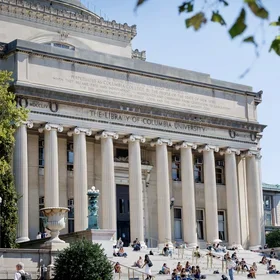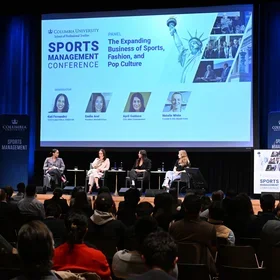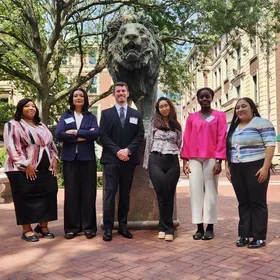Jason Kang, Co-Founder and CEO of the health technology startup Kinnos, will coach finalists in The Greater Good Challenge, a business pitch competition hosted by the Career Design Lab and made possible with support from the Beba Foundation and Turkish Philanthropy Funds.
When the Ebola outbreak took hold in 2014, Jason Kang and his Columbia classmates were called to action. To combat the spread of the virus, Kang helped to create a powder that changes color to show which specific areas of a surface have been properly disinfected and when. The bleach additive, now on the market, received national attention and will soon expand into a line of wipes.
Today, Kang serves as the CEO of the parent company, Kinnos. No stranger to competitions himself, Kang recently shared his take on the key components of a successful health technology pitch.
What are you hoping to see among the contest submissions?
I'm hoping to see founders who are in it for the right reasons. It takes a lot of work to get a product off the ground, so I'm looking for a real commitment to the mission and an understanding that the founders know what they're signing up for.
Make sure you can clearly identify the exact person in the healthcare system who is going to buy your product and why."
What advice would you give to individuals pitching a health technology idea?
The currency of credibility in the healthcare world is quantifiable data. Even if the product isn't fully ready yet, figure out ways in which you can get measurements and metrics of subcomponents that paint a picture that your product is going to do what you say it will.
Don't forget that to make the greatest impact possible, you have to have a sustainable business model — make sure you can clearly identify the exact person in the healthcare system who is going to buy your product and why. Figure out if there's anyone else you have to convince besides the person writing the check.
If your team hypothetically won the seed money, how would you utilize the funding? What would be your first piece of advice for the winners?
It really depends on the stage, but assuming you've got an early prototype, I'd use the money to make some samples, figure out how to get it in front of a bunch of people and ask for direct and honest feedback about whether it solves their problem and if they'd be willing to pay for it. Ideally, you'll already have done a fair amount of this customer discovery work with your concept, but actually letting people have a feel for the execution of the product is super important. And if you're confident enough in the execution, you could also use this as an opportunity to generate quantifiable data.


